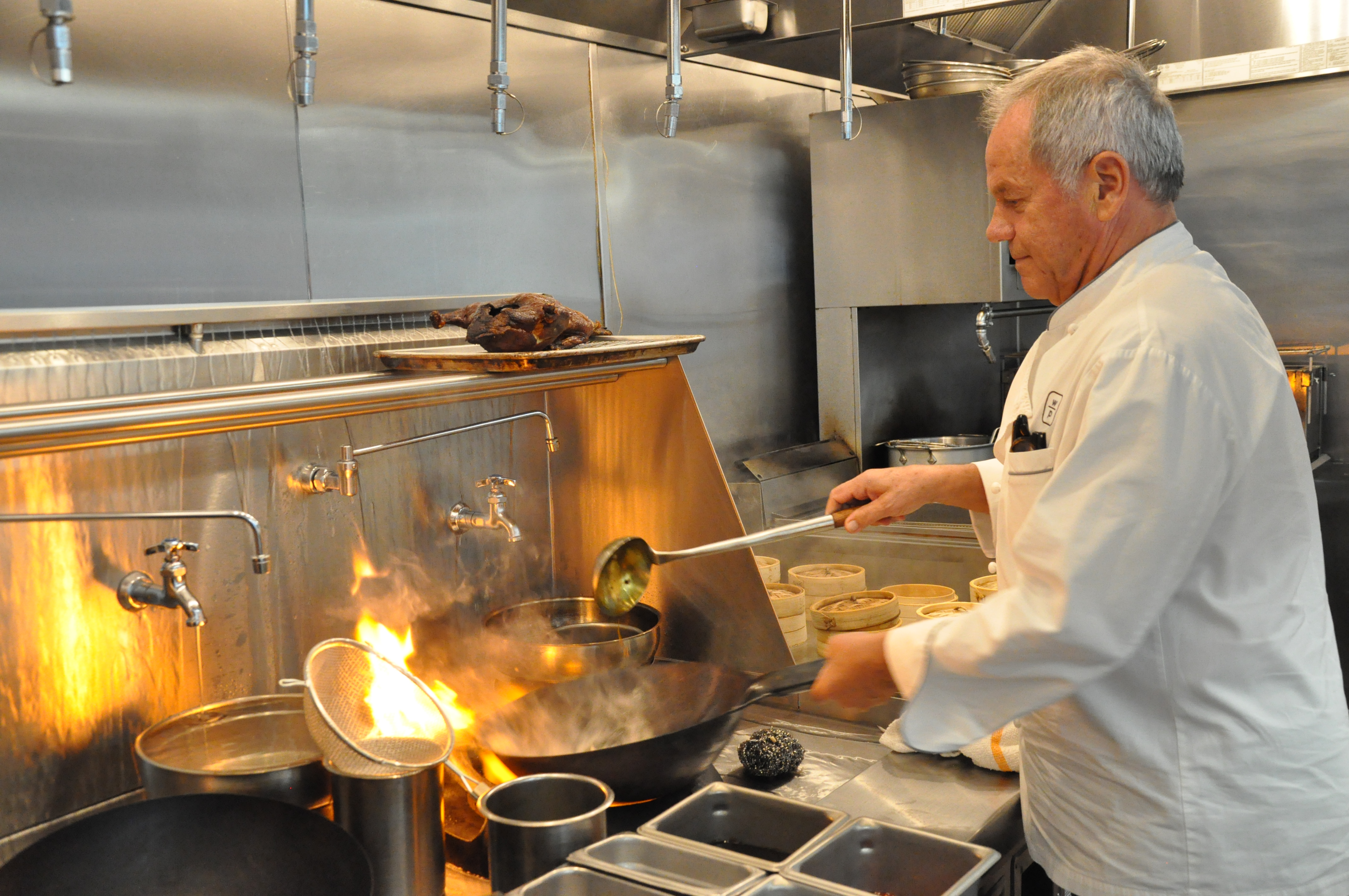WASHINGTON — The end of a meal is often the most stressful part.
As soon as the dishes are cleared, the pens and calculators come out — long before the taste of creme brulee has a chance to leave your mouth.
You might find yourself asking, “Was the soup hot enough? Was the wine selection what I expected? And did the service live up to my expectations?” — all before scribbling a number on the bottom line of the check and closing the black book.
But it doesn’t have to be that complicated. A handful of restaurant owners are doing away with tipping.
In October, Danny Meyer announced plans to change the way he pays his employees. The chief executive officer of Union Square Hospitality Group, which oversees 13 high-end restaurants in New York, is eliminating tipping.
“It’s an experiment that I think a lot of people in the business are watching and really pulling for,” says journalist Corby Kummer, who wrote about the topic in a recent article in New Republic.
Meyer, who is also the founder of the popular burger chain Shake Shack, attempted to do away with tipping 20 years ago, but received too much pushback from the wait staff to make the change work, Kummer says. However, with minimum wage on the rise in many states, including New York, he’s trying again, and he’s hoping it will solve a number of issues present in the industry.
When the minimum wage goes up, chefs and restaurateurs have to pass the cost burden along to the customer in the form of higher menu prices. And when diners add an additional 20 percent for service on those bigger bills, the only ones who benefit are the wait staff.
Kummer explains that even if tips are pooled among staff (a common practice in many restaurants), it’s illegal in several states to distribute those profits to non-service employees — such as the chef, the dishwasher and even the sommelier.
This creates a noticeable disparity between the front-of-the-house staff, and those behind the scenes.
“Cooks sweating in the back of the house can’t get any money at the end of the night and have nothing to show for a busy Saturday night, while the waiters are high-fiving each other,” Kummer says. “It’s just a dead, antiquated system and I think it’s time to go.”
In an interview with NPR’s Kelly McEvers, Meyer says in the last 30 years, he’s seen a 200 percent increase in income among wait staff. Those in the back of the house have only seen wages increase 22 to 25 percent.
“Restaurant owners know they’ve got to do something to even out this disparity,” Kummer says.
This no-tipping thing — how’s it going to work?
Meyer’s plan is to increase the prices by a certain percentage on the menu and pay all of his employees a fair amount, not the standard minimum wage for tipped employees. (There is a difference between minimum wage and minimum wage for tipped employees. In 43 states, the minimum wage for tipped employees is $2.13 an hour.)
The extra profit made from the food will be divided evenly among staff. Since it isn’t technically a service charge, no law prohibits Meyer from excluding non-service employees.
Aphra Adkins, co-owner of the D.C. restaurant Sally’s Middle Name, doesn’t accept tips at her H Street eatery, and hasn’t since day one.
“We wanted to try to give everyone who worked here the best opportunity possible,” Adkins says.
Unlike Meyer, the cost is not passed down to the customer in menu prices. The restaurant includes an automatic 18 percent charge on every check. Staff start out making D.C.’s minimum wage ($10.50 an hour), and the extra profit is split evenly.
“Everyone from the dishwasher to the bartender gets an equal amount of that,” Adkins explains. “One of the things that we really wanted to do was just bring everyone who worked here together toward the same goals and kind of working toward the same thing and not feeling divided by a difference in pay structure.”
Kummer says a no-tip model, such as those put in place by Meyer and Adkins, will help attract and retain culinary talent. In high-rent cities, it’s not uncommon to have culinary graduates working in the front of the house to make ends meet, instead of fulfilling their dreams to be a chef.
The new approach will also help add some stability to an otherwise unpredictable industry. Kummer cites stories of waiters bursting into tears after serving a large group of European diners who didn’t leave a tip because they are accustomed to it being included, or slow nights that yield an empty dining room, and thus, empty pockets.
A common fear among service staff is that they will make less once no-tipping policies are instituted. To address this concern, at least during the transition, Meyer has promised to match the average wage by the same position last year, The New York Times reports.
Adkins says she thinks, moneywise, it all shakes out in the end. Plus, an even wage gives more options to those who can’t leave their income to circumstance.
“Some people’s lifestyles are conducive to waiting for those really big nights where you know it’s going to be super busy, you’re going to make a bunch of money,” she says. “Other people’s lifestyles are a little more conducive to knowing, ‘This is exactly how much I’m going to make this week, and I can set that aside for my kid’s doctor’s bills or whatever it may be.’”
Kummer predicts that customers may initially balk at the change, but says the idea of not having to turn into a human calculator at the end of a meal will likely help them swallow the cost of a $13 hamburger.
“There’s going to be sticker shock and owners are going to be worried about it,” Kummer says. “But when the check comes, there’s one total and there’s no line for an additional gratuity — that’s it.”
Adkins says since opening this summer, customer feedback on the no-tipping policy at Sally’s Middle Name has varied, but overall “it’s been pretty well received.”
“It’s been pretty widely publicized so when people come in, they know to expect that. And I think the people who are unhappy with it, or who are uncomfortable with it choose not to come in. And that’s fine; it is different and we can’t expect everybody to like everything all the time,” she says.
“We’re not trying to say this is better or this is the way that everyone should do it. This is a different way to do it and it works for us.”
Tom Colicchio of Bravo’s “Top Chef” fame also eliminated tipping during lunch service at his New York restaurant Craft, but Kummer says all eyes are on Meyer to see if the new standard works across a larger pool of restaurants.
“I think everybody in the business is watching Danny Meyer and crossing his fingers, hoping the waiters don’t all go away, that it isn’t a failure and that customers don’t desert the restaurant,” Kummer says.
Adkins says even if the model works, she’s not sure all restaurants will be able to switch to a no-tipping system, but she’s happy it’s becoming part of the conversation.
“I think more and more people who are opening restaurants, or who have established restaurants, are realizing that there’s not only one way to do it, and that there can be a conversation about changing different aspects of it or changing the whole process. I think that’s really great, just people realizing that there’s flexibility and that you can adjust things to be based on the business model that you have in mind. It doesn’t have to be set in stone.”






